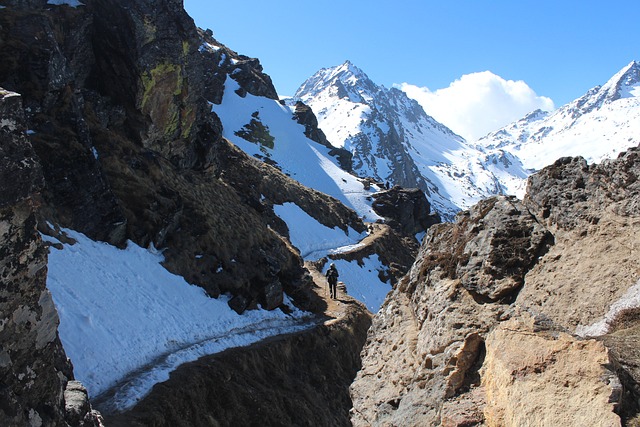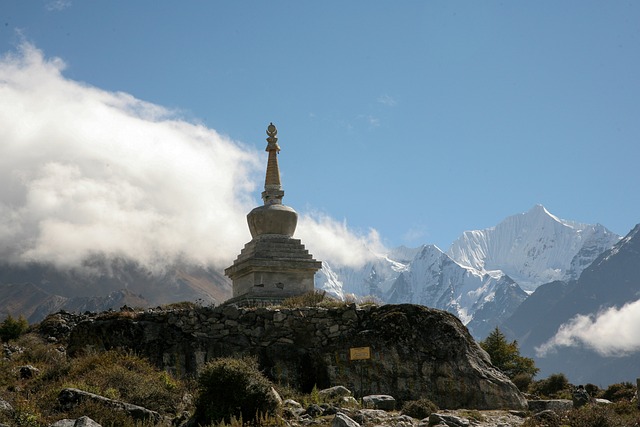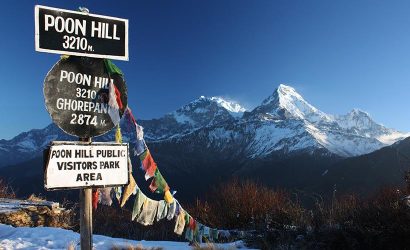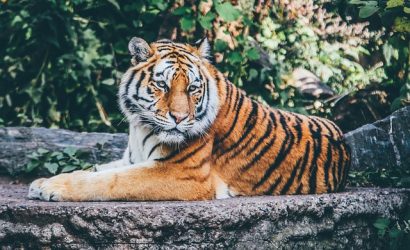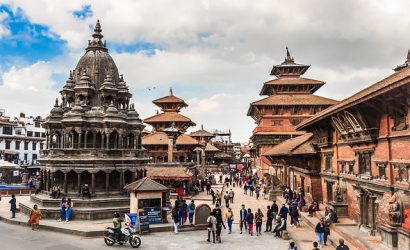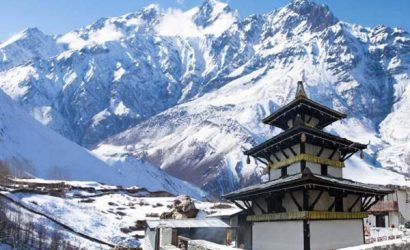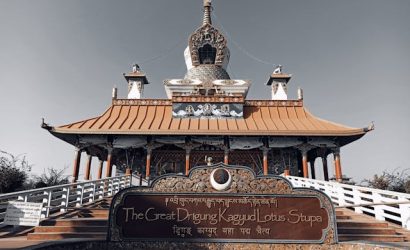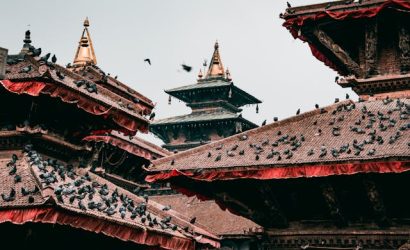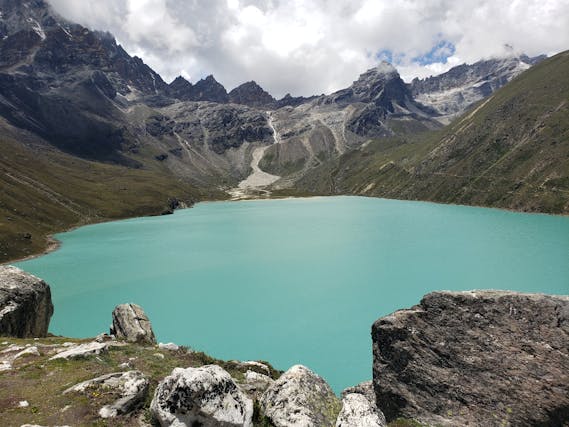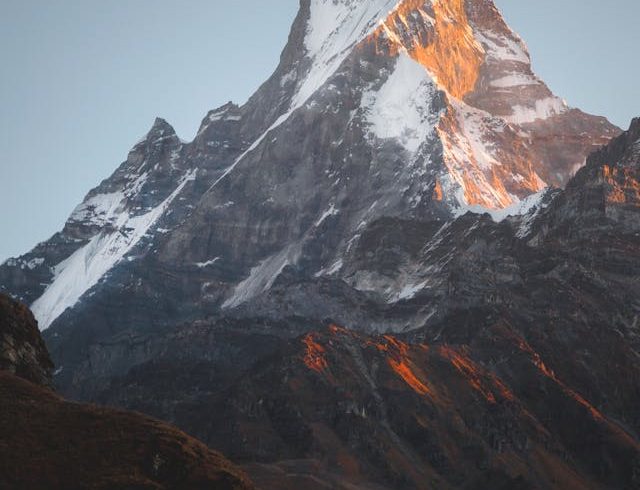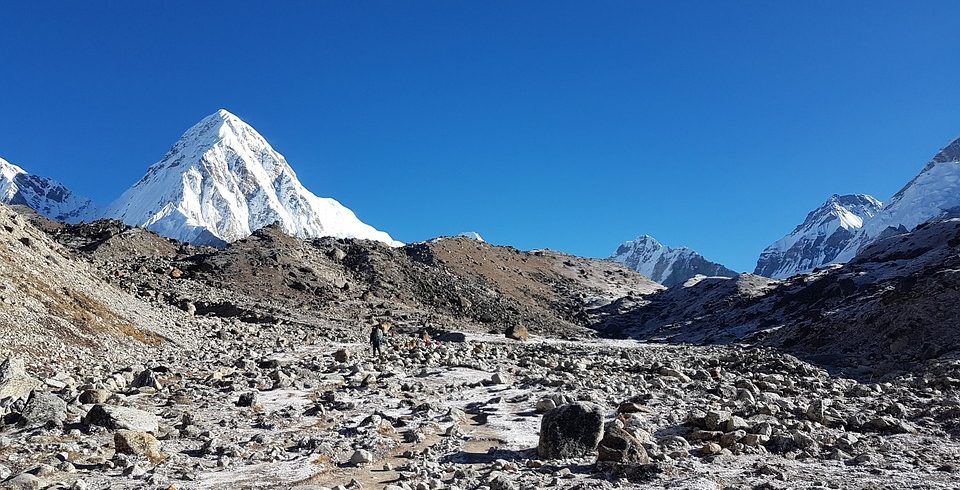Langtang Valley Trek Summary
The Langtang Valley Trek offers a quick approach to the Himalayas, immersing trekkers in authentic Tibetan culture and providing 360-degree views of peaks like Langtang Lirung. This trek showcases alpine floral and faunal species, making it a rich experience in both cultural and natural aspects.
Trip Info
-
Langtang
-
5150 m/16896 ft
-
B|L|D on Trek, |B| in Kathmandu
-
Teahouse & Hotel
-
Car & Tourist Bus
Overview
The Langtang Valley Trek, located to the north of Kathmandu and bordering Tibet, offers an accessible adventure into the Himalayas. Situated within the Langtang National Park, this trek features diverse flora, including several rhododendron species, oak, and sal trees below the sub-alpine zone. The region is rich in wildlife, home to Himalayan tahr, musk deer, langur monkeys, and endangered species like the red panda, Himalayan black bear, and the elusive snow leopard.
Trekkers will experience a tapestry of vibrant forests, abundant wildlife, waterfalls, and stunning mountain views. The trail also provides a cultural immersion, with villages offering a glimpse into Tibetan culture and lifestyle, highlighted by visits to Kyanjin Gompa and Langtang Monastery.
Starting from Syabru Besi, a 120 km journey from Kathmandu, the trek reaches its highest viewpoint at Tserko Ri (5033m) or the less taxing Kyanjin Ri (4,700m). Majestic peaks such as Langtang Lirung (7,227 m), Dorje Lakpa (6,966 m), Gangchenpo (6,387 m), and Yala Peak (5,520 m) offer breathtaking views. This trek is a moderately challenging yet relatively quiet and short adventure suitable for moderately fit individuals.
Trip Highlights
- Offers stunning mountain views and a genuine Himalayan trekking experience, free from large crowds.d
- Experience the rich cultural tapestry within the Buddhist community, including various dialects such as Tibetan and Tamang, along with local cuisine.
- Encounter diverse flora like rhododendron and juniper, and fauna such as musk deer and Himalayan tahr. The park is also home to endangered species like the red panda, Himalayan black bear, and snow leopard.
- The viewpoint at Tsergo Ri (5150m / 16896ft) provides breathtaking views of peaks such as Langtang Lirung (7,227 m), Dorje Lakpa (6,966 m), Loenpo Gang (6,907 m), Changbu (6,781 m), Gangchenpo (6,387 m), and Yala peak (5,520 m).
- Enhance your trek with a tour of Kathmandu Valley's World Heritage sites, including Pashupatinath, Boudhanath, Kathmandu Durbar Square, and Swayambhunath.
Itinerary
You would find our representative ready outside the Arrivals Terminal with a warm Nepalese welcome. You are escorted to your hotel in Thamel in a private vehicle. You have some time to relax before we meet in the afternoon for an orientation meeting.
After breakfast, your tour guide meets you at the hotel and we start our day tour exploring the World Heritage sites of the Kathmandu Valley.
First off, Basantapur, commonly known as Kathmandu Durbar Square, is a historic plaza in the middle of Kathmandu, Nepal. It is famous for its beautiful architecture, which includes old palaces, temples, and courtyards. The area is a hive of cultural and religious activity, with festivals, rituals, and traditional rites being held there. Basantapur provides tourists with an insight into Nepal’s rich history, art, and architecture. Next up, Swayambhunath, popularly known as the “Monkey Temple,” is a significant Buddhist temple in Kathmandu, Nepal, located atop a hill. This historic stupa is draped with colourful prayer flags and provides sweeping views of the city. It is not just a spiritual destination, but it is also a cultural monument that exemplifies Nepal’s rich past and religious importance.
Furthermore, we visit Pashupatinath- the largest Hindu Temple in Nepal located on the banks of the Bagmati River. The temple complex is famous for its exquisite pagoda-styled architecture, ornate carvings, and religious rites, including the cremation ceremonies held beside the river called ‘Aryaghat’. What more, Pashupatinath Temple also holds tremendous cultural and spiritual value. Finally, the Boudhanath Stupa in Kathmandu, Nepal, is one of the world’s biggest Buddhist stupas. With its grand stature, calm ambience, and colourful prayer flags flapping in the breeze, this landmark building draws tourists and serves as a major Buddhist pilgrimage destination and a focal point of Tibetan culture.
We drive back to the hotel and prepare for the trek.
After breakfast at the hotel, we begin the journey towards Syabrubesi on a local bus. Syabrubesi is the start point of the Langtang Valley trek which takes about 7-8 hours’ drive. Enjoy a scenic drive through Trishuli Valley with rural villages, terraced farms, rivers, valleys, and mountains. We have lunch on the way. Eventually, we reach Syabrubesi (1,420m) by late afternoon. Overnight at Syabrubesi.
The Lantang Valley trek commences by crossing the Bhote Koshi River and chasing the trail upstream along Langtang Khola. Then, the trail ascends for around two hours through the forest, followed by a climb of about an hour to reach Bamboo Village (1,850m/6,068ft). Eventually, it climbs gently up to Rimche (2,400m) which lies at the bank of Langtang Khola. Finally, we ascend up through the dense bamboo forest and arrive at Lama Hotel. Overnight at Lama Hotel.
After breakfast, we start with a pleasant walk and follow the trail through rhododendron and pine forest for around three hours. Langtang Lirung appears abruptly, enticing us. The later section of the trail before Ghoda Tabela winds up with moderate steepness. Onward for another three hours, the trail features plenty of ups and downs. Markedly, the sub-alpine landscape takes over with plenty of rocks and pointed cliffs around us. The devastating effects of the 2015 earthquake are quite visible shortly before Langtang, near the old monastery area. Langtang Village (or town rather) appears in front of us over a ridge after a brief trek. The magnificence of the Langtang range to the north and the vastness of the valley behind us is memorable. In the years following the earthquake, the village of Langtang has grown quite significantly. Dinner and overnight at Langtang Valley.
Today after breakfast, we leave Langtang village and start the trek to Kyanjing Gompa. The trail starts with a brief uphill until the villages of Sidhum and Mundu. Later, the journey continues with a delightful walk alongside a long row of exquisite chortens, ‘mani’ walls (rock with intriguing religious writings), and little monuments adorned with prayer wheels. A riverside monastery and prayer wheels driven by a running stream are sure to catch your fancy. The route gradually ascends until we reach the town of Kyangjin Gompa on the opposite side of a small peak by mid-day.
Beautiful views of Ganchempo (6,378m) and Langtang Lirung (7,234m) can be enjoyed from here. We have a free afternoon after lunch to tour the village and the monastery. The Kyanjin Gompa (Monastery), which is claimed to be 700 years old, is worth exploring for its intriguing paintings, scrolls, collection of medieval prayer books, and deity sculptures. Also worth exploring is the Yak Cheese Factory. What’s more, a side trip to the Langtang Lirung Glacier or the Kyanjin Ri viewpoint is another doable option for the more adventurous. Overnight at Kyanjin Gompa.
We set off to scale Tsergo (Tserko) Ri in the morning when the weather is supposed to be more steady and less windy. A packed lunch and water for the day and we’re good to go. The day’s trail starts with a hike east over the field, then crosses a stream and climbs continuously. Prepare for a windy ascent, and bring crampons if the track, especially further up, is coated with ice. As the route swirls against the hills and permeates glacial rocks, the ascent can take three to four hours on average. The viewpoint of Tserko Ri is adorned with prayer flags and provides an all-out view of the magnificent mountains and glacial environment. Langtang Lirung (7227m) stands out, as does the Kyanjin Valley to the northwest.
Dorje Lakpa (6966m), Langshisha Ri (6,427 meters), Ganchenpo (6,387m), Naya Khang (5,844 m), and Ganja Chuli (5863m) are some of the notable mountains that make up the splendid view. The awe-inspiring view of the valley below also adds to the experience. We gently begin our return trek to Kyanjin after enjoying a packed lunch at the peak and taking in the scenery. The return trip takes roughly the same time, if not more as we would be descending more than 1300 meters. Once at Kyanjin, we relax and enjoy dinner.
After breakfast, we trek back to Ghodatabela. The return trek is not as taxing and rather pleasant as we enjoy the return back to greenery and a relatively unchallenging trail. Overnight at Lama Hotel.
The trek down to Syabrubesi goes via Bamboo through the rhododendron forests and alongside the Bhote Koshi River. Evening, we explore around and call it a night at Syabrubesi.
After breakfast, we drive from Kathmandu to Syabrubesi by local bus. As we reach Kathmandu, we will be taken to our hotel. Take a rest and in the evening you can stroll around Thamel before we enjoy a farewell dinner together at one of the best restaurants in Kathmandu. Overnight at Kathmandu.
This is your last day in Nepal. You may indulge in shopping, and buy some souvenirs for your family and friends until your departure from the airport. Later, we escort you to the airport for your return flight.
Cost
Price Includes
- Airport pick-up and drop
- 3 nights accommodation in Kathmandu
- Kathmandu - Syabrubesi - Kathmandu transfer on a local bus (private transfer option available, subject to extra costs)
- 7 nights accommodation at Local Tea Houses during the trek (Breakfast, Lunch and Dinner Included)
- Accompany of Licensed, English-speaking, well experienced trekking guide with salary, insurance and personal expenses covered
- One porter for every two clients (13 Kg luggage per person)
- A cup of tea/coffee (three times a day) and seasonal fruits after dinner on the trek
- Attached bathrooms and hot showers wherever available
- Trekking permit TIMS and Langtang National Park Permit for the trek
- First-Aid box with medicines (Carried and handle by the guide)
- All applicable government charges
Price Excludes
- Nepal Visa and International airfare
- Travel Insurance (Compulsory) - must cover helicopter evacuation, medical expenses, and Trip Cancellation charges
- Meals in Kathmandu except for breakfast and farewell dinner
- Personal equipment and other personal expenses such as beverages, confectionaries, laundries, etc.
- Monument Entrance fees during the sightseeing tour
- Extra meals, extra porterage service, Wi-Fi, charging of your electronic devices, etc.
- Tips to your guide, porters, driver and other field staff as a token of appreciation
- Any other expenses or charges not mentioned in the 'Trip Includes' list
FAQs
Expertise and Experience
- Guided by Experts: Our experienced guides have in-depth knowledge of the Langtang region, ensuring a safe and informative trekking experience.
- Local Insights: Benefit from guides who are well-versed in the local culture, traditions, and biodiversity of the Langtang Valley.
Unique and Customized Itineraries
- Tailored Experiences: Enjoy itineraries that are designed to cater to both novice and seasoned trekkers, ensuring a personalized adventure.
- Cultural Immersion: Engage with the local communities and experience their unique Tibetan and Tamang cultures, enhancing your trekking experience.
Commitment to Sustainability
- Eco-Friendly Practices: We prioritize sustainable tourism practices to minimize our environmental impact and support local communities.
- Community Support: By trekking with us, you contribute to local economies and help preserve the cultural heritage of the Langtang region.
Comprehensive Services
- All-Inclusive Packages: From accommodation and meals to permits and transportation, we take care of all the logistics, allowing you to focus on enjoying your trek.
- Safety First: We ensure all safety measures are in place, including emergency evacuation plans and well-equipped guides.
Scenic and Serene Trails
- Off-the-Beaten-Path: Experience the tranquility of less crowded trails, offering breathtaking views of Langtang Lirung and other majestic peaks.
- Biodiverse Landscape: Trek through diverse landscapes ranging from lush rhododendron forests to high alpine meadows, home to a variety of wildlife.
Added Excursions
- Kathmandu Sightseeing: Complement your trek with tours of Kathmandu Valley’s UNESCO World Heritage sites, providing a comprehensive cultural experience.
Highlights of the Langtang Valley Trek
- Spectacular Views: Unobstructed views of Langtang Lirung, Dorje Lakpa, and other prominent peaks.
- Rich Biodiversity: Encounter unique flora and fauna, including endangered species like the red panda and snow leopard.
- Cultural Experiences: Visit ancient monasteries and traditional villages, experiencing the local way of life.
- Scenic Tsergo Ri Viewpoint: Enjoy sweeping vistas from Tsergo Ri (5150m), one of the trek’s highest points.
By choosing Magical Nepal Trek for your Langtang Valley adventure, you ensure a memorable, enriching, and responsible trekking experience.
The Langtang Valley Trek is moderately challenging to difficult based on the terrain, number of trekking days, time of the year and current weather conditions. It also depends on previous trekking experience and the skill of the trekker.
Although the destinations in lower altitudes can be trekked throughout the year, Spring (February to May) and Autumn (October to December) are the best times to trek in high altitudes. Nepal receives monsoon rain from June through September, which is not a great time to trek. Winter is very cold in the upper mountains with heavy snowfall which cause obstructions in the trekking routes.
A Trekkers’ Information Management System (TIMS) card is necessary for most trekking regions. Additionally, an entrance permit is required for protected areas such as the Langtang National Park and others. Upon confirmation of your booking, we acquire all necessary permits on your behalf.
The average trekking hours is around six hours. It can range from four to eight hours a day depending upon trail conditions, day of the itinerary, and weather conditions.
All treks with an exception of a camping trek include accommodation in a mountain lodge or guest house for overnight stays and meals.
Teahouse trekking is a popular trekking option wherein trekkers stay at cozy local tea houses in the mountainous regions on a full-board basis. This trekking style is preferred by most trekkers who do not want to carry the additional burden of tent, food supplies and other daily necessities
The nationwide expansion of mobile network has made it possible to enjoy 4G and 3G network in most parts of the trek up to moderate altitude. A simcard for NCell and NTC, the leading mobile telecommunications providers can easily be availed. Uninterrupted connection however is greatly affected by weather conditions and terrain. More high altitude remote areas like the Everest base camp require satellite phones.
A good level of overall fitness, sound health and stamina is necessary to go on and enjoy the trek. If you have any chronic or acute health condition, we recommend that you consult your physician before signing up for the trip.
It is a known fact that oxygen levels at higher altitudes are significantly lower than the level that we are used to and the body needs to adjust to this change in atmosphere. The best way to aid acclimation is to climb slowly. We have prepared our itinerary to allow enough time for acclimation and not put too much of strain on the body. Adequate acclimation days, a combination of rest and a short hike have been arranged to further support the process. Minor symptoms of altitude sickness include severe, persistent headache, coughing, pressure in the chest, shortness of breath even while at rest, dizziness, tiredness, loss of appetite and others. It is vital you constantly monitor your health condition and report any signs of sickness to your team leader.
If you fall sick or get injured despite precautions, our first-aid trained guides would be your first help. Depending upon the nature of sickness or injury, you would either be immediately taken to a lower altitude (in case of altitude sickness) or evacuated by a rescue helicopter for medical attention. We would require your insurance details to arrange for a rescue helicopter if you are injured in a remote area and in no condition to trek further.
Safety of all our guests is our utmost priority. Nepal has been well-known as a safe destination and the Nepalese as friendly and welcoming people. We generally trek in small groups in constant care and company of our experienced and expert guides. The places that we frequently utilize as our stops have been known to be reliable and safe over the years that we have been served. As such the safety of all travelers is ensured.
Your insurance is mandatory and should cover emergency air ambulance and/or helicopter rescue services and all related medical expenses for injury, death, loss of baggage, theft and trip cancellation. Please ensure that all activities and destinations in the itinerary are included in your policy, specifically mountaineering or alpinism. You are required to send in your insurance details while booking the trip
The maximum weight of baggage per person on the Annapurna Circuit trek is 15 kg, so please make sure you do not carry any extra items that you would hardly use on the trek. You may safely store the extra luggage not to be taken on the trek at the hotel in Kathmandu. This is also to strictly ensure that our porters are not overburdened. Any additional baggage that you bring along would be subject to additional cost for hiring of an extra porter.

